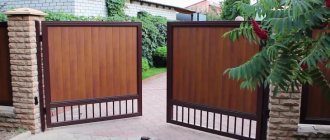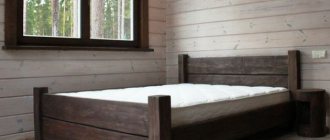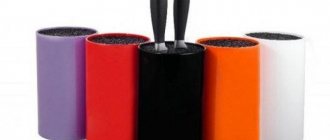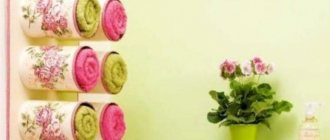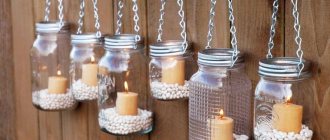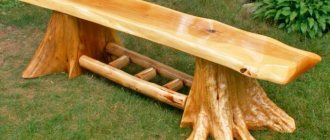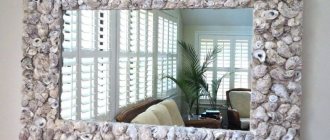Landscape design dates back to ancient times. Of course, then this direction in art did not have such a name. The decoration of the area surrounding the buildings began with temple complexes. The structures erected for the worship of deities were treated with special honor and they tried to appease the members of the pantheon by creating a unique landscape around the holy place. The temples had not only luxurious decoration inside, but picturesque views outside. The sites were decorated with flower beds, flower beds, statues, arches, terraces, decorative ponds and neat paths connecting secondary buildings.
From the history of landscape design
An enormous contribution to the development of landscape architecture was made by the ancient Egyptians, who devoted most of their lives to the worship and praise of deities. In the city of Thebes, for the first time, a tradition arose of decorating not only temple complexes, but also local areas with ponds with fish and underwater flora. The inhabitants of Babylon and Assyria decorated their yards with lush vegetation. Seeds were brought from different parts of the world. One of the Seven Wonders of the World - the Hanging Gardens of Babylon - marked the beginning of this tradition. The Babylonian king, being involved in a bloody war with the Assyrians, entered into an alliance with the Median sovereign. They defeated Assyria in a joint campaign, and to seal the agreement, a marriage was arranged between Nebuchadnezzar and the daughter of the king of Media, Amanis. His wife longed for the green landscapes of her home in the dusty capital of Babylon. Then the king ordered the creation of a magnificent garden on stone supports, equipped with a unique irrigation system. An error crept into history and the building was associated not with the name Amanis, but with Semiramis, the Assyrian queen who lived earlier.
In India, floating gardens were built. The luxurious palaces of Indian nobles were traditionally decorated with spacious ponds, onto which rafts with bulk soil and planted flowers were lowered. In the Middle Ages, unique garden “labyrinths” appeared that decorated summer palaces for the relaxation of crowned persons and their families. History has preserved many magnificent examples of decorating areas around residential buildings. Landscaping in front of the house plays a special role in decorating the area, as it is the “face” of the property, which will be shown to every guest.
Garden plot design ideas
The area around the house primarily separates private properties from street ones, and can also decorate the housing itself. Today, the arrangement of household plots is not a particular problem; there are many interesting proposals and ideas in this regard. For example, the simplest and most common way is to decorate the area with flower beds and create a hedge. Fountains in front of the house or artificial ponds, decoration around the home area with various figures, statues or other unusual details are becoming increasingly popular.
An integral part of any private home are gazebos and specially designated recreation areas. The choice is huge, it all depends on the taste preferences of the owner and, accordingly, his financial capabilities.
In this case, the main thing to take into account is an important point - the choice of landscape compositions must necessarily correspond to the style and architectural character of the building.
Flower garden design idea
What does it consist of and features of the layout
The decor of the area in front of the house will include many elements:
- Green spaces and flower beds.
- Water facilities.
- Gazebos and terraces,
- Fences and gates, gates.
- Track systems.
All these landscape components must be linked into the overall composition. When planning the placement of each element, three aspects are taken into account:
- Relief.
- Climatic features.
- Soil type.
If the home area is spoiled by hills and hollows, there is no need to rush and level the area using bulk soil. Features of the relief can be transformed into advantages that will help create a unique design composition. Zonal division of the territory into small areas involves the placement of separate areas, which are isolated from each other, but at the same time connected by a system of decorative paths. You can set up a gazebo near the house so that in the summer there is somewhere to hide from the scorching sun. A decorative pond will give you coolness along with aesthetic pleasure. Systems of flower beds and flowerbeds will be pleasing to the eye and beneficial if some of them are planted with spices. Green fences do not always serve only a decorative role, because you can decorate your home area with berry bushes.
When planning, the features of the shape of the yard and its size are also taken into account. Two or three acres is enough to accommodate a gazebo, green spaces, a driveway and even a small front garden. To additionally decorate your country courtyard with a lawn or a spacious lawn, you will need a little more space.
Planning
Modern design of the site involves careful planning of green areas. At this stage, you will have to think about the location and layout of the pets, arrange suitable living conditions for them (hide shade lovers away from the sun's rays, install trellises for climbing plants, install fences that limit growth).
The green site improvement project involves dividing the site into three parts:
- the first (external) part will beautifully design the boundaries of the land plot;
- the second (internal) will allow you to design the territory adjacent to the house;
- the third (middle) will help fill the rest of the area free from beds.
There are no special rules for landscaping, so each housewife chooses for herself the most attractive solutions from her point of view. But the landscape design of the site in any case should be one whole.
Deciding on the style
The design style of the yard should be tied primarily to the main building - the house. If different directions are selected, then they must have points of contact to create a dynamic mix, an organic combination. The design can be simple or pretentious, luxurious and on a grand scale. More laconic options are suitable for typical dachas, the main purpose of which is summer outdoor recreation and caring for the garden. Chic courtyards, as a rule, decorate townhouses and cottages. A wide range of styles are divided into two groups:
| Historical | These include English, Spanish, French, Russian, Mediterranean, Scandinavian, Mauritanian. |
| Popular modern | This group contains trends that are similar in their characteristics to similar styles in interior design. These include high-tech, eco, modern, minimalism, alpine (chalet). |
Decoration is carried out in accordance with the concept of the direction that was chosen.
The area in front of the house
The landscaping of the area in front of the house depends on the chosen style. Most often found here:
- bright or formal front gardens;
- separate flower beds;
- potted flower beds;
- fluffy borders;
- arches and pergolas entwined with plants.
The latter option is perfect for masking the flaws of builders and the influence of the inexorable passage of time. It will also help you create lovely relaxation areas with a garden swing or cozy nooks for drinking tea.
It all starts with a wicket, gate and fence
The outer fence should be high and monumental. Its main function is to protect the site from unauthorized entry by uninvited guests. The beauty of the fence fades into the background. Based on the material used, fences are classified into the following types:
- Stone. Durable material used for permanent fencing. The stone is universal and fits almost any style. If only the foundation part and dividing columns between sections are made from it, then the material can be combined with brick, metal or wood.
- Wood. It looks organic in combination with Provence, country and Russian style. In order for a wooden fence to last a long time, the material must be protected with a special impregnation that prevents moisture from entering the micropores of the wood.
- Metal. Forged elements can create an elegant, sophisticated composition, but at the same time they do an excellent job with the protective function of the fence.
- Brick. This type of fencing will last a long time, but has a slightly rustic appearance. Suitable for modern styles.
- Concrete. The material is poured into special molds, and the result is identical sections for fencing. Concrete has an affordable price, but at the same time allows you to choose an original design.
- Slate. An unsightly fence made of this material is suitable as a temporary option. The wicket and gate are matched to the fence, since these elements are part of one composition.
Rest of territory
Beautiful landscaping of the entire remaining territory will make the area cozy and fresh. For this use:
- flower beds;
- lawns;
- topiary;
- fruit or ornamental bushes and trees.
The area for landscaping will need to be first leveled or, conversely, raised depending on the design options, fertilizers must be applied, and an irrigation system must be provided. All elements can be used individually or create a beautiful ensemble united by one idea.
Arrangement of paths and entrances
The yard is decorated with a main entrance road leading to the house and decorative branches along which people can walk. For the land plot, choose a durable concrete, stone, brick or asphalt covering. The options look original when gaps filled with grass are left between smooth cobblestones.
Decorative paths are made from less reliable materials that decorate the landscape. These include:
- Gravel, crushed stone, pebbles. To prevent small pebbles from being carried throughout the area, the path is fenced with green spaces or flower beds.
- Sand. A budget option that turns into mush when it rains.
- Tree. Decks look presentable and blend with rustic style, but will not last long.
- Ceramic tile. From pieces of tile laid out using the mosaic technique, you can create a colorful and creative path.
- Plastic. Special modules are sold in stores, but this option looks cheap and unpresentable.
- Wood cuts. The walkway will last a long time, but its installation will be accompanied by large-scale excavation work, because the decks are of a decent height. This is necessary so that the track can withstand heavy loads. Flat “pancakes” of saw cuts will quickly crack.
- Traffic jams. An original option that will require painstaking work from the designer. Decorative paths can also be made of concrete or brick, but combining materials will create a complex landscape picture.
Highlights of our garden: ponds
Perhaps the second favorite decoration of the site after flower beds is ponds and small ponds. The picturesque combination of water and plants is mesmerizing and gives you coolness in the summer. Decorating reservoirs is a creative process and there are also many styles. You can make a flooring around it from boards. And so as not to have to worry about painting and impregnating them, they can be made not of wood, but of composite - there is a new material that looks very much like wood. The only difference is that it does not rot or change color. This material is called decking. It can be used to cover an open veranda or terrace near the pool. You can see an example of its use around a pond in the photo.
Flooring around the pond - it will be convenient to walk even after rain
You can also pave the space around with stone slabs. This arrangement will take more time, but many people like this option better. To prevent the entire finish from “floating”, you will have to remove part of the soil, fill it with crushed stone, compact it, and add a layer of sand on top. You can now lay slabs on it. The gaps can be filled with a mixture of sand and cement, the excess can be thoroughly swept away, and then either wait for rain or water the blind area - the cement will set, securing the slabs. The coverage will be reliable.
Beautiful red granite, and even a stream
Using the same technology, you can line the edges with boulders collected on the river bank (or purchased at a garden center).
Boulders are a great way to decorate the edge of a pond
If the paths in the garden are made of paving stones, it makes sense to decorate the shore of the pond as well. The technology is known, only the material is different.
Paving stones - no need to look for anything, everything is in the store
Lighting
Patio lighting at a summer cottage is divided into two types:
- Functional or basic.
- Decorative.
The first is necessary for comfortable movement around the yard at night, and the second simply emphasizes the advantages of the decor. For street lighting, it is not recommended to use fluorescent lamps, which will not work at low temperatures. The wiring is laid underground to eliminate the risk of mechanical damage. The best option when choosing light bulbs are halogen and LED devices. They have a long service life and low energy consumption.
If the owners are not night owls and do not spend nights outside, then solar-powered lamps can be used. In terms of economy, they are the leaders among lighting devices. The light bulbs only work for 4-5 hours at night, since the energy accumulated during the day is not enough for more.
Lawns
Cozy green meadows are increasingly decorating the summer cottages of even avid gardeners. Usually they are located in the entrance area, so as not to spend a lot of time maintaining a cozy appearance of the territory, or in the recreation area, where they are intended for playing with children or carefree lying in the sun.
According to their intended purpose, lawns can be:
- decorative, intended exclusively for admiring fluffy grass;
- practical, withstanding occasional walking on green surfaces.
According to the installation method, they are distinguished:
- sowing;
- rolled lawns.
Gardening methods
Green spaces are divided into three types:
- Trees. Due to their decent height, they cannot be planted close to the fence, as the shadow may disturb the neighbors.
- Shrubs. They create original compositions, animals and geometric shapes.
- Flowers and other low plants.
Trees are used to create slender rows along paths or small front gardens with fruit varieties. Flowers are collected in colorful arrangements for flower beds. Different types of plantings can be combined with each other.
Selection of plants and planting principle
Plants must be selected taking into account the following criteria:
- Soil features.
- Groundwater level and location of the site (lowland or upland).
- Climatic conditions.
Moisture accumulates in lowlands after heavy rains. For this reason, such areas become swamped and become unsuitable for most plants. It is much easier with higher elevations, since it is easier to water one more time than to artificially drain the soil. The viability of certain plant species also depends on the composition of the soil. Poor rocky soil will be a test for delicate flowers. Sand in dry areas does not retain moisture, so a quality irrigation system will be required. Chernozem is considered the most nutritious, but with heavy rains it turns into a dirty “porridge”. The solution for poor soil will be a bulk layer, which is brought specially for plantings. For plants, 0.5 m of soil will be enough, but for shrubs and trees that have a powerful, developed root system, you will have to order several trucks.
It is also necessary to take into account the compatibility of certain plants with each other. Some “selfish” people can suck all the juices out of the earth and provoke their neighbors to slowly wither. Such aggressive specimens are planted at a distance.
Creation of flower beds and flowerbeds
A flower garden is a broad concept that combines variations in planting. It is classified into types:
- Free. The flower garden does not have any fences, and the riot of flora is tamed by systematic processing.
- Mixborders. A ribbon flower garden is limited on one side by a fence and is often planted along paths. The name of the decorative element was obtained as a result of the merger of two words: mix (mixing) and border.
- Flowerbeds. This type of flower garden has a fence. It is given a variety of shapes: from rectangular to round.
- Border of flowers. Typically, it is planted from low flower bushes that border the lawn from the driveway or garden path. Flower beds can also be modular, mixed and multi-dimensional. If you choose the right types of plants, you can get an original gradation of color in the flowerbed.
Shaped design of bushes
Trimming plants is not as simple as it might seem at first glance. Only certain types of shrubs are suitable for figured plantings: boxwood, cotoneaster, privet, yew and holly. They are easy to cut. Boxwood is poisonous, so pets and children should be kept away from it. Privet is ideal for “lazy” gardeners, as it only requires trimming once a year. Until the desired result is obtained, the plant is limited to a homemade wire frame. If you don’t get the hang of this, then they buy special templates, inside which the bushes develop in the right direction and are adjusted to the shape. Geometric shapes are considered the simplest, but animals or people will take years to create.
Trees - how to choose and which ones are best to plant
In landscape design, trees are classified into four types:
- Conifers. They are good because they retain their green colors even in winter. Conifers prefer shade and are hardy.
- Deciduous. A favorite option among designers. They are divided into two subspecies: decorative deciduous and flowering.
- Fruit. These include apple trees, pears, cherries, apricots, cherries, and plums.
- Evergreen deciduous. In winter, they do not expose their crowns, but require special care. Trees are planted according to four principles:
- Groups. They usually combine fruit trees.
- Solitaires. A single thuja or pine tree on the site will definitely attract attention.
- Alleys. Trees are planted on both sides of the path.
- Hedge. Although it is usually made from shrubs, a “decoration” made from trees will more reliably protect the area from prying eyes from the street.
Do not forget that neighboring trees are also selected based on the principle of compatibility, like flowers.
Topiary
The ancient Japanese art of curly pruning of trees and bushes is rarely used in Russian dachas. Firstly, this is quite labor-intensive work, which many people simply don’t get around to, and secondly, tree figures require larger spaces than the usual 6 or 9 acres.
Most often, Russian topiary involves trimming border bushes.
A good option for such landscaping would be to fill a ready-made frame with plants. It does not require complex care or design skills.
Water features
The set of water features in landscape design includes:
- Sources. This is the beginning of the bed of an artificial reservoir or natural stream.
- Fountains. Artificial structures in which jets of water are thrown out under pressure.
- Streams. They have a curved, irregular shape and a narrow channel.
- Waterfalls. They are a stream whose water flows over obstacles (most often stones).
- Cascades. A system of several waterfalls.
- Ponds with standing water.
It is not necessary to artificially erect complex structures if a natural water “artery” flows through the site; its banks are decorated with stones and complicated with barriers to form cascades. Swimming pools also belong to this type of decor, but they rarely decorate courtyards on sites, since such an arrangement is considered impractical.
Fencing options for the front garden
Today, the following materials or ready-made variations are most often used as a fence for a front garden:
- forged fence;
- stone or concrete front garden;
- wicker fence made of branches;
- metal front garden;
- picket fence for the front garden;
- front garden fence made of corrugated sheets.
Original terraces and gazebos
A separate seating area will be a functional addition to the patio. For these purposes, gazebos and terraces are built. The first ones are divided into several types according to the type of construction:
- Open. These lightweight gazebos consist of supports and a roof. Used for recreation in the summer.
- Half open. As a rule, they have decorative walls made of forged elements or wooden slats.
- Closed. The design of the gazebo includes glazing and walls. Used for winter recreation. Monumental structures are even equipped with a stove.
Separately, it is worth noting the pergolas. These structures are similar to gazebos, but instead of a roof they have a “canopy” of climbing plants (grapes, ivy) that wrap around the frame. The shapes of the structures can be round, square and polygonal. The terrace is an artificially created hill on which tables, chairs, and sofas are placed. They are classified into three types:
- Closed. The building consists of walls and a roof. It can stand separately from the house or adjacent to it. Rain and wind are not a problem for vacationers on such terraces.
- Half open. They have a roof and light curtains are used instead of walls.
- Glazed. Their design includes a roof and panoramic windows. The main advantage of the terrace is the abundance of sunlight and protection from bad weather. Another special type of structure consists of only walls, but the structure is placed in backyards. This design element is typical for the Spanish style.
Popular front garden styles
The main “classic” styles of house front gardens are:
- rustic;
- Japanese;
- Mediterranean or southern;
- Asiatic;
- romantic;
- minimalism;
- modern execution.


